
Where We Be
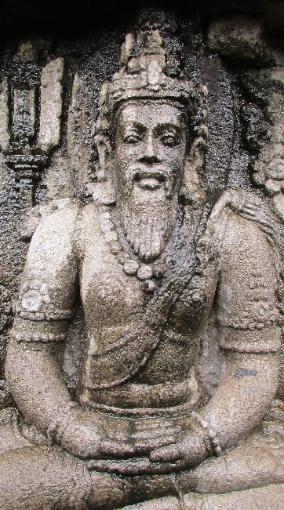
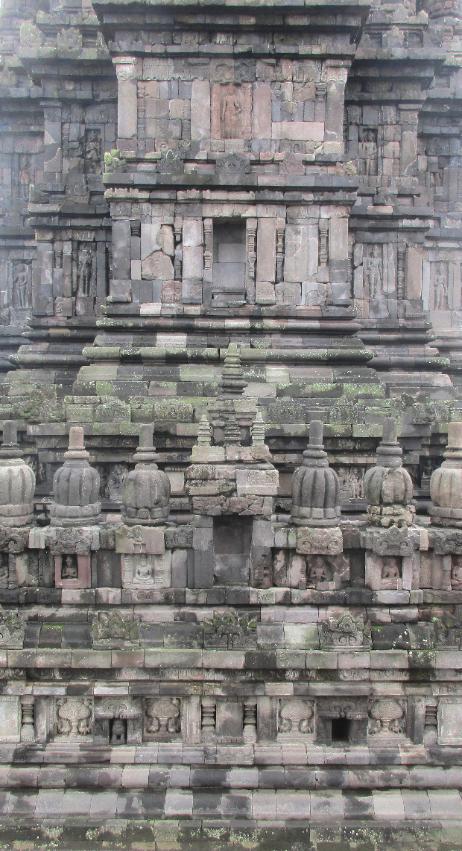
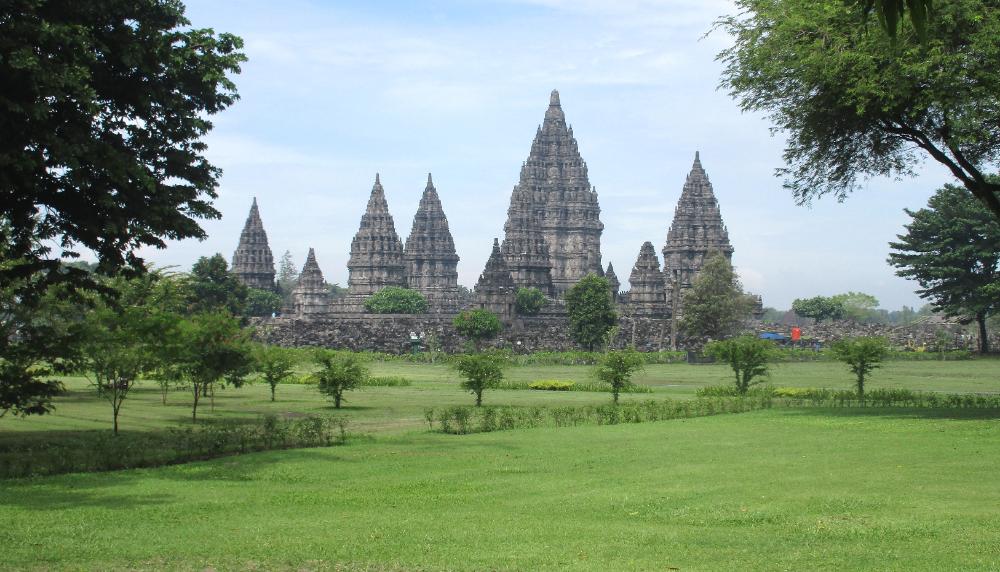
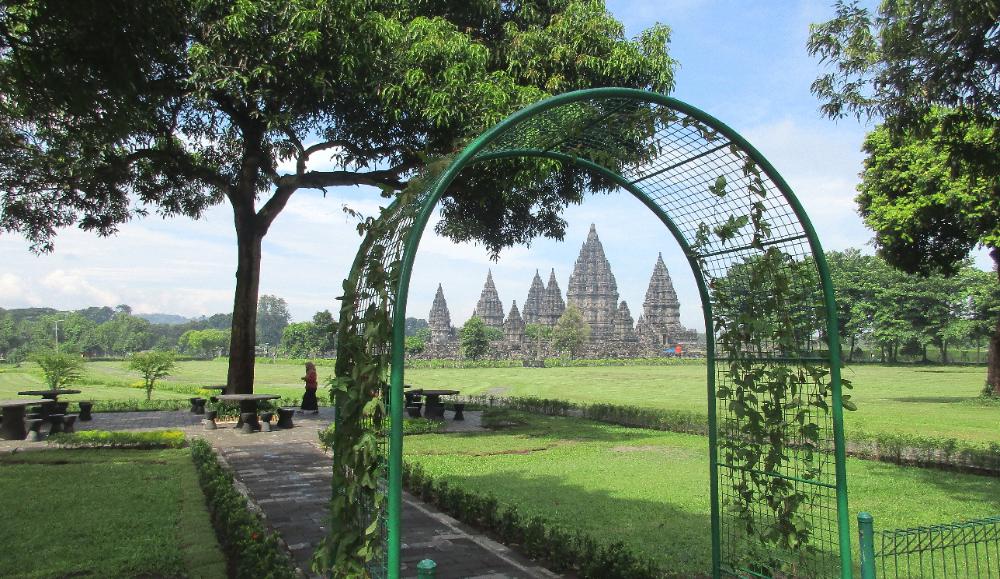
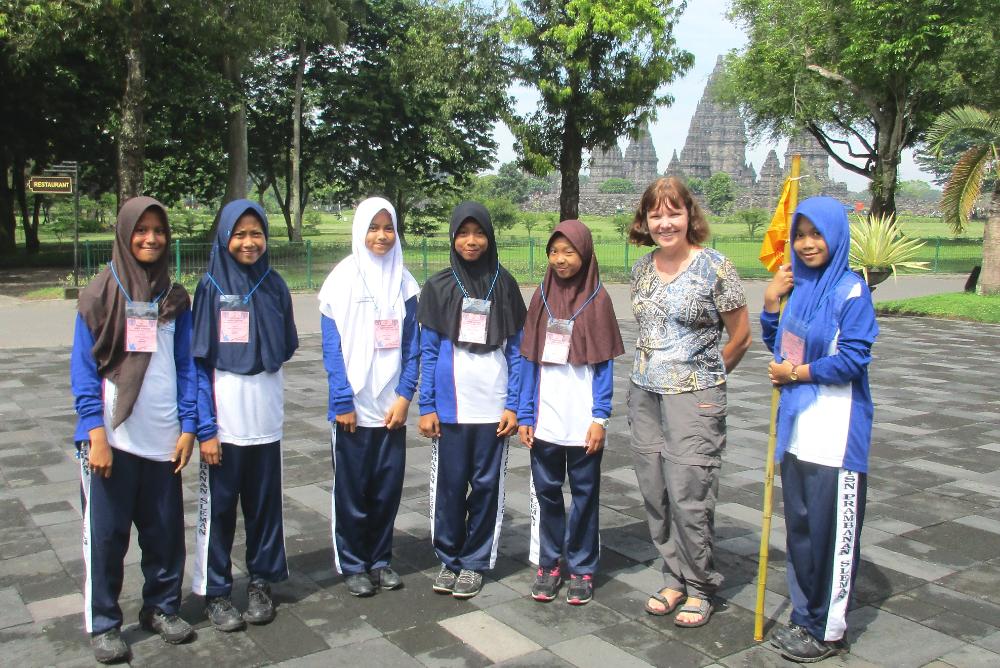
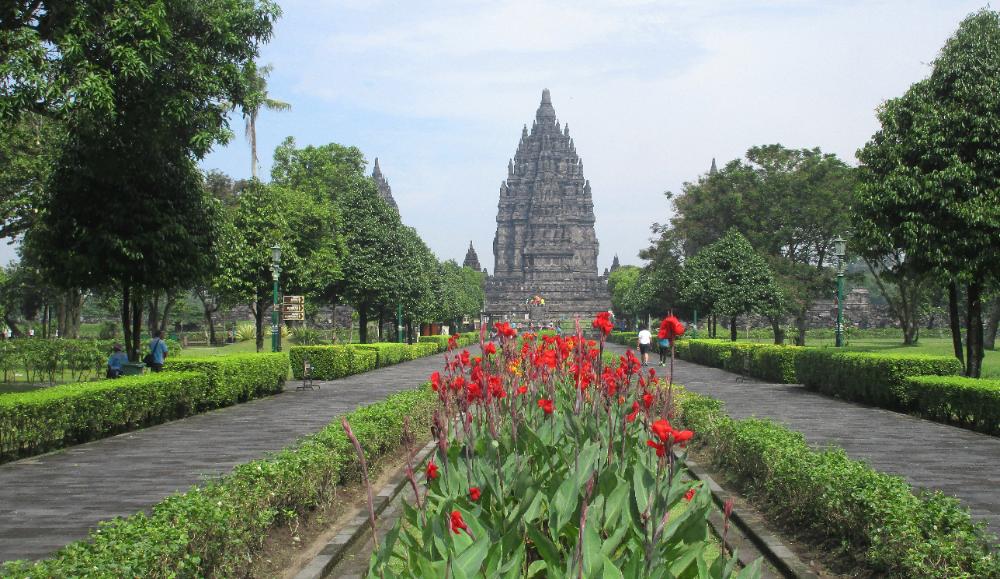
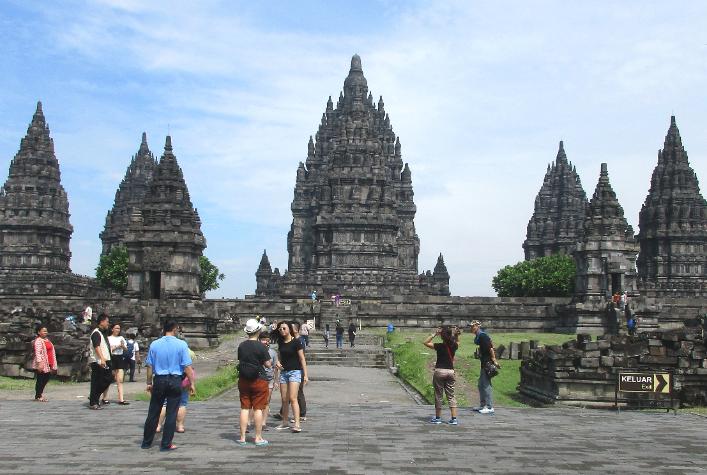
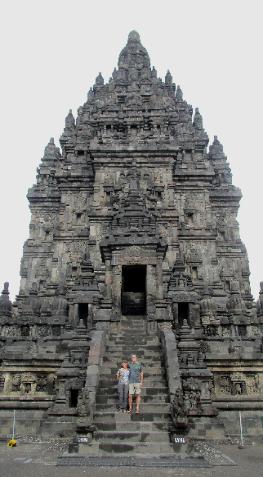
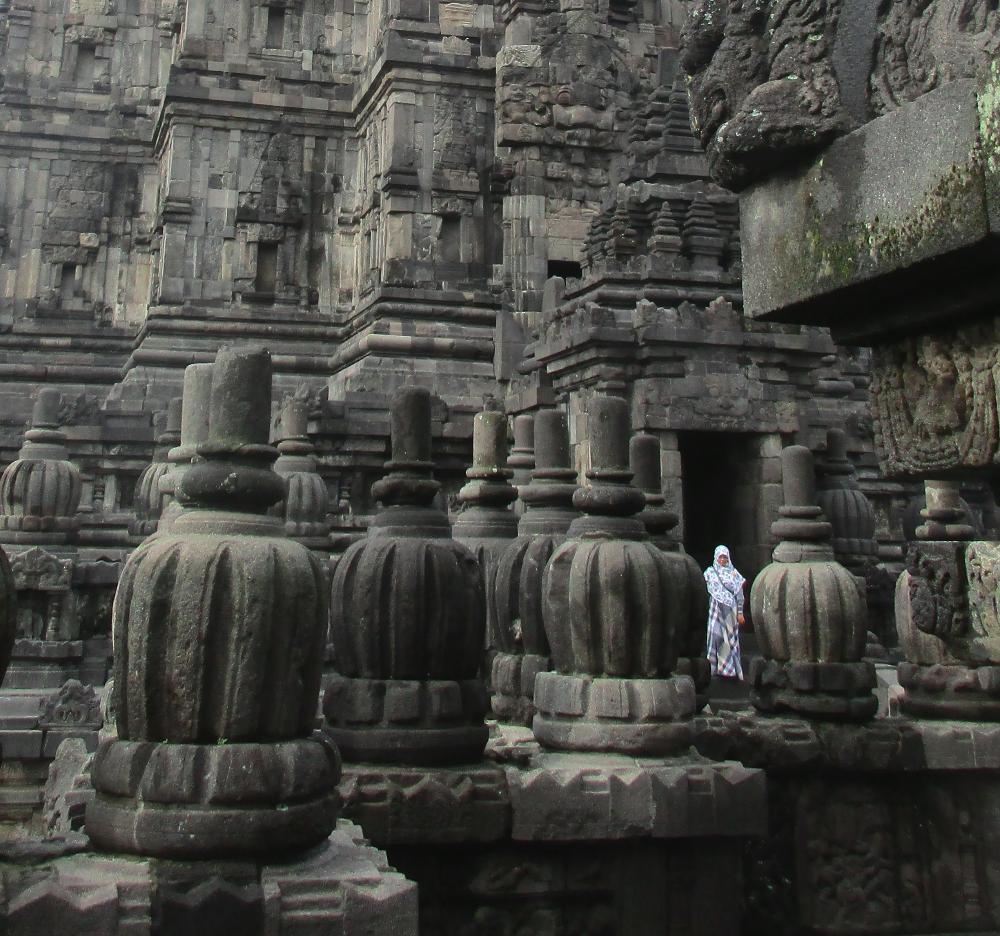
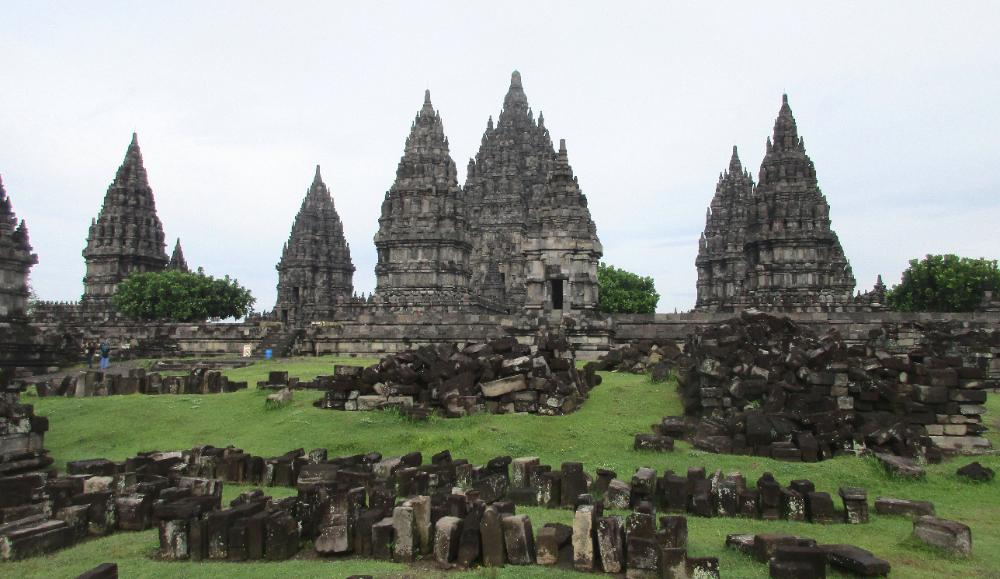
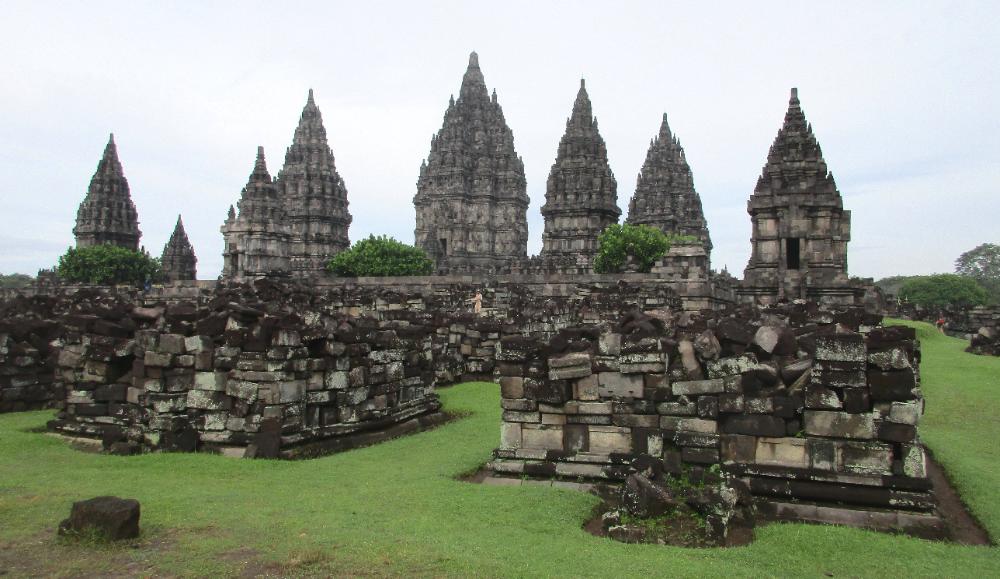
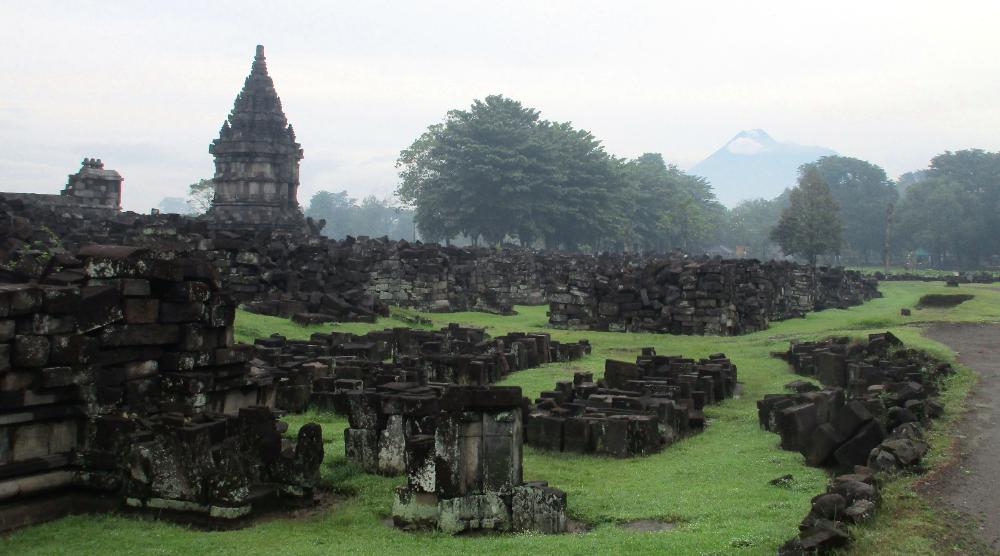
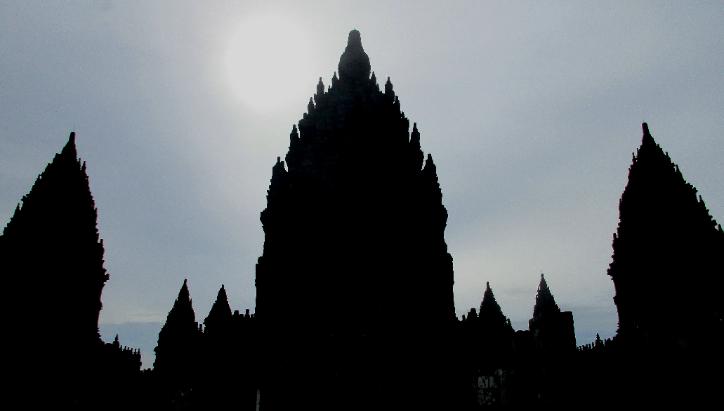
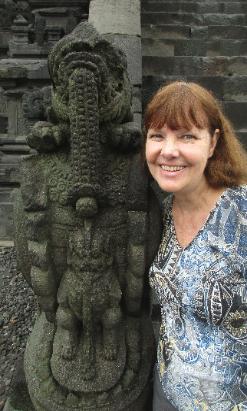
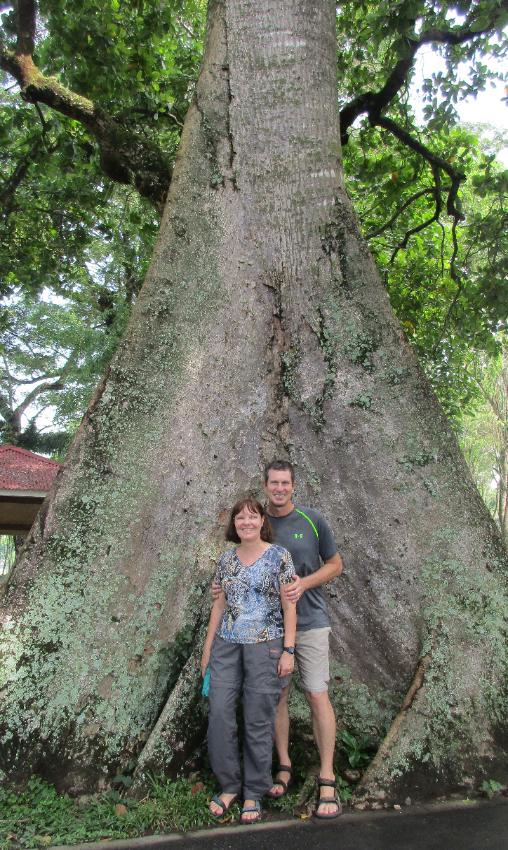
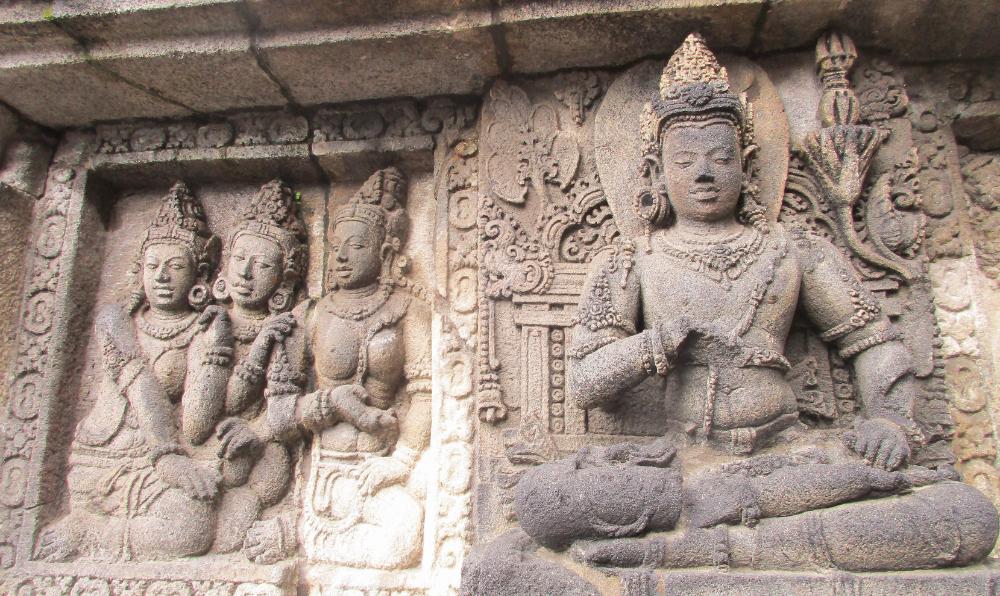
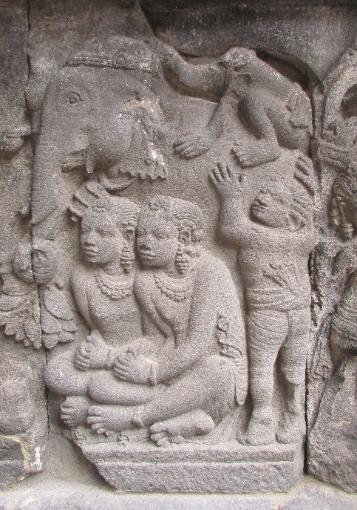
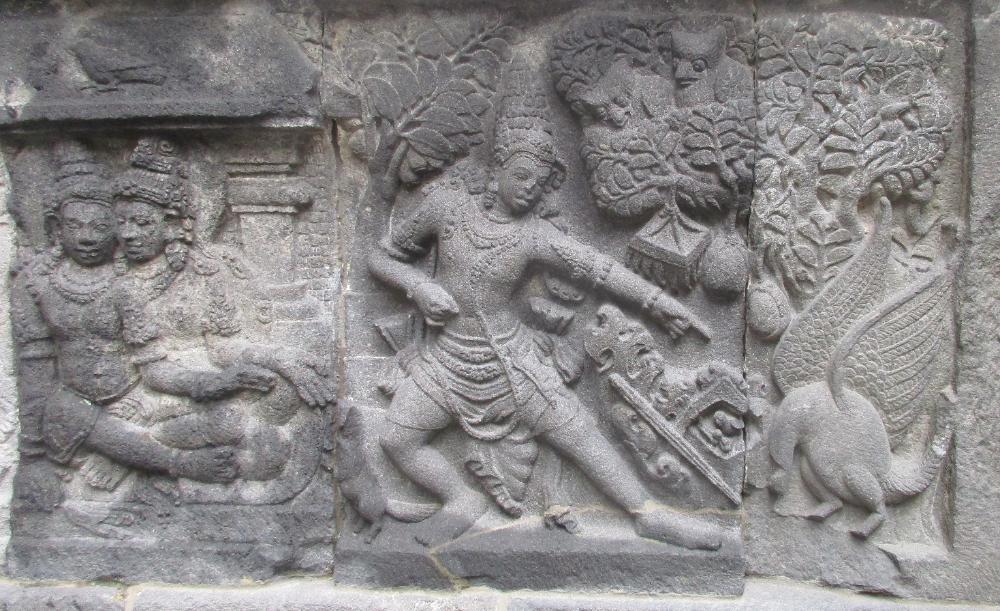
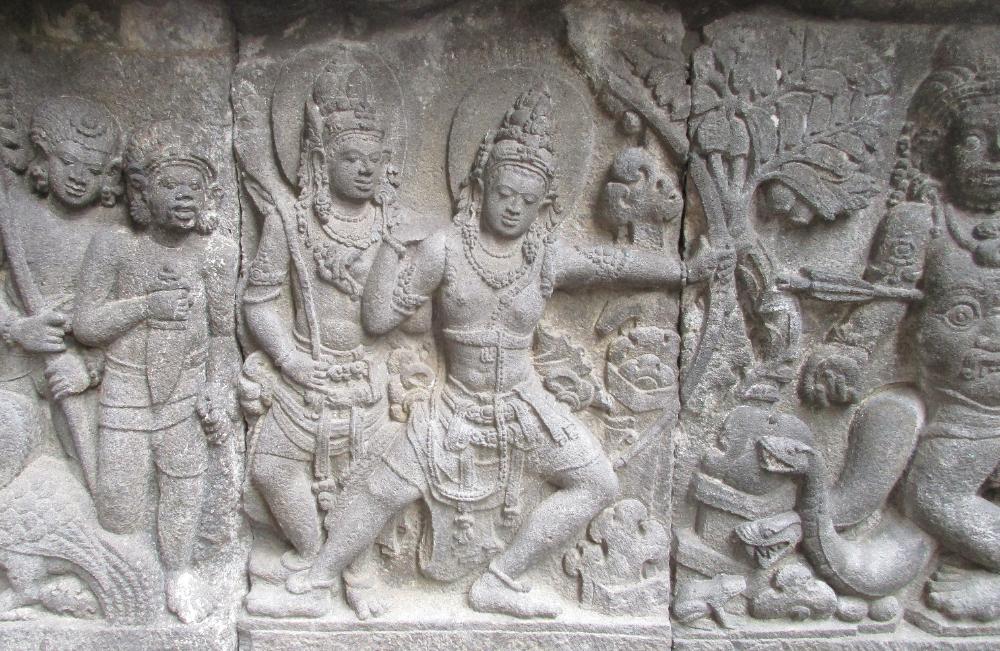
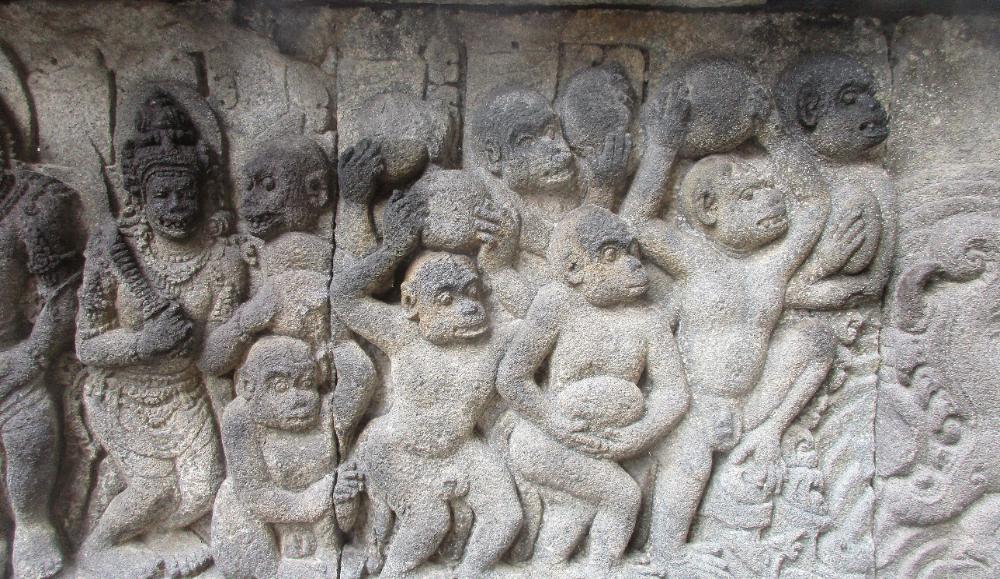
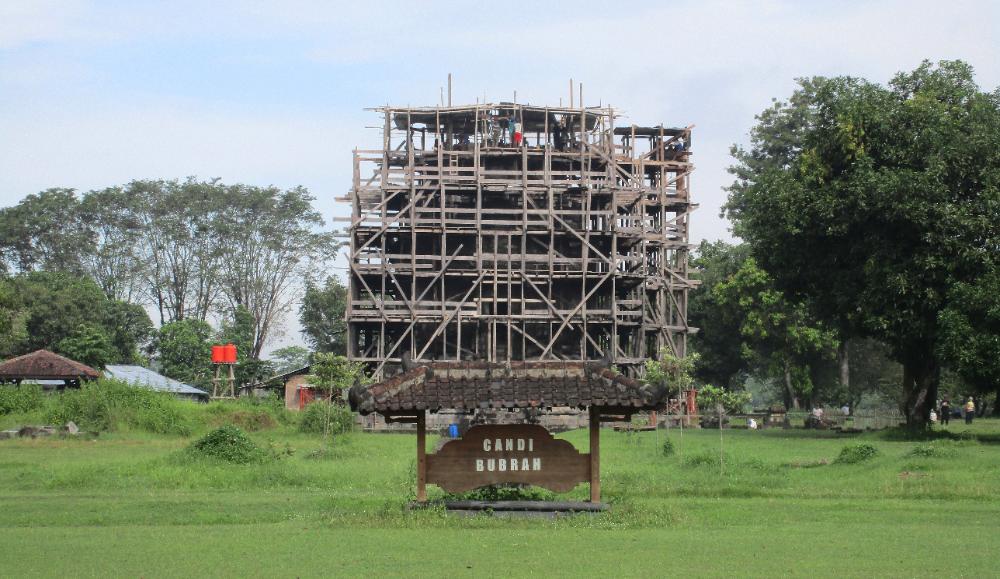
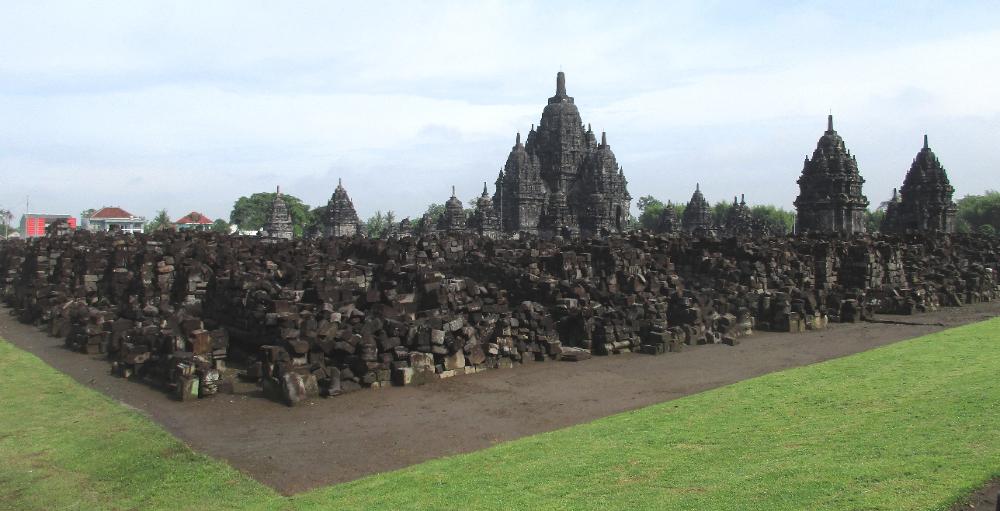
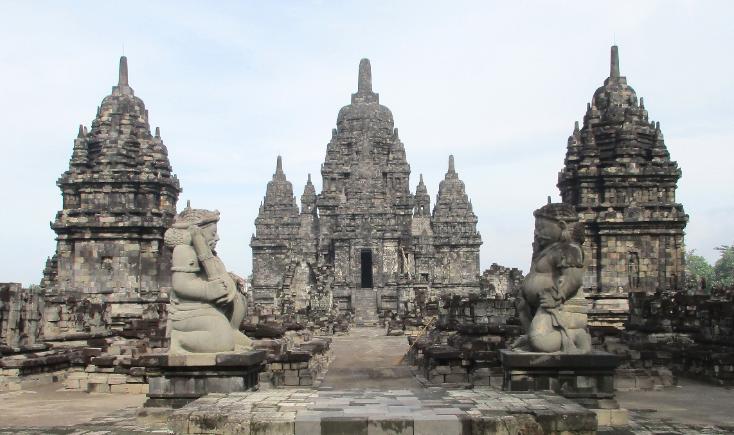
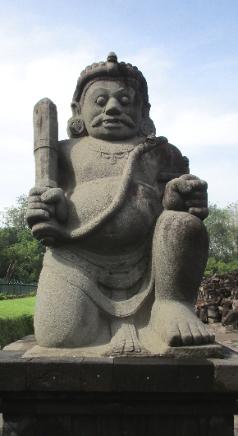
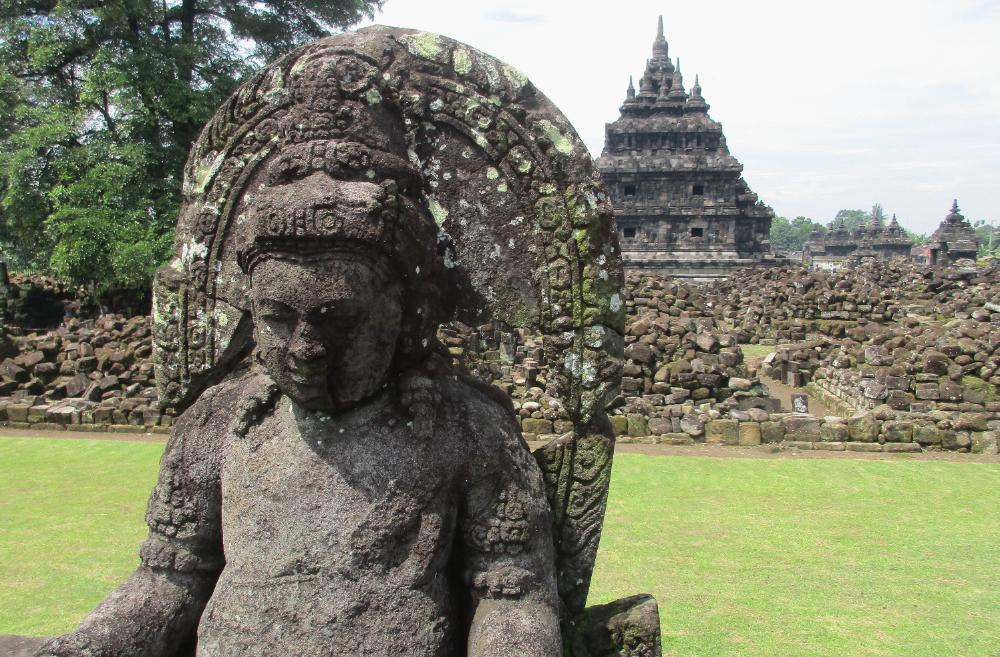
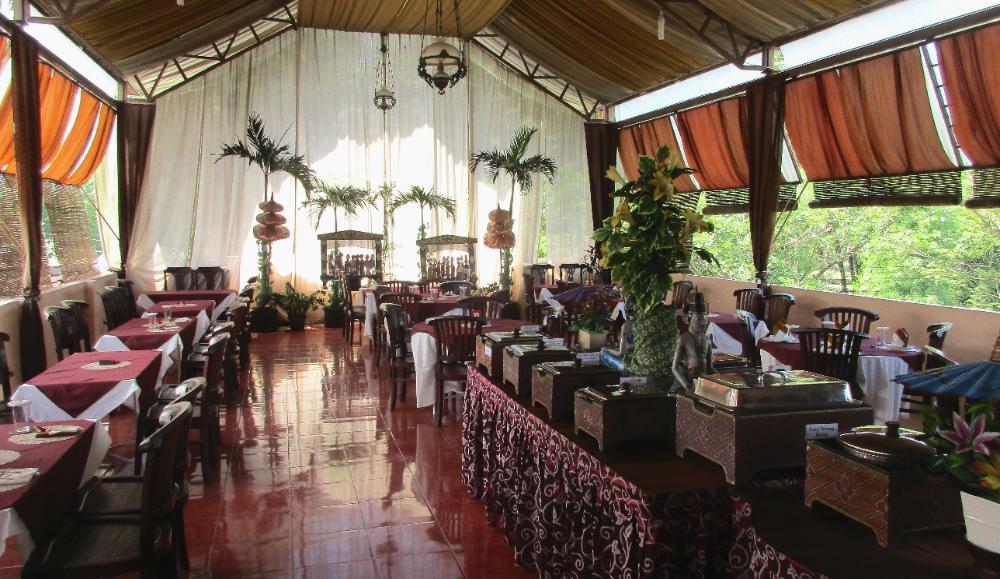
| Prambanan is the largest Hindu temple site in Indonesia -- and one of the biggest in Southeast Asia. What a pretty sight in the early morning! |
| Prambanan -- Yogyakarta, Indonesia |
Yogyakarta is doubly interesting for tourists
because it has both Buddhist and Hindu temples
of historic and cultural significance. Borobudur
is Buddhist and Prambanan Hindu, and both
were built around the same time in the 9th
century. Both are UNESCO World Heritage Sites,
so coming to "Jogja" is like getting a terrific
two-for-one deal when it comes to sightseeing.
We took a contrarian approach and visited
Prambanan in the morning despite the general
wisdom that it’s best to go at sunset. We liked
arriving at 7:30 am and had the place mostly to
ourselves at a cool time of day. The impressive
temple complex shown at left forms the heart of
Prambanan, but there are other smaller temples
just to the north that are also worth seeing like
Sewu and Lumbung temples. We had a driver
but not a guide and enjoyed touring around by
ourselves. We met Indonesian tourists in the
morning hours but only a handful of Westerners.
because it has both Buddhist and Hindu temples
of historic and cultural significance. Borobudur
is Buddhist and Prambanan Hindu, and both
were built around the same time in the 9th
century. Both are UNESCO World Heritage Sites,
so coming to "Jogja" is like getting a terrific
two-for-one deal when it comes to sightseeing.
We took a contrarian approach and visited
Prambanan in the morning despite the general
wisdom that it’s best to go at sunset. We liked
arriving at 7:30 am and had the place mostly to
ourselves at a cool time of day. The impressive
temple complex shown at left forms the heart of
Prambanan, but there are other smaller temples
just to the north that are also worth seeing like
Sewu and Lumbung temples. We had a driver
but not a guide and enjoyed touring around by
ourselves. We met Indonesian tourists in the
morning hours but only a handful of Westerners.
| You can even have a picnic or snack at the viewpoint. Prambanan is located just 11 miles (17 km) northeast of Yogyakarta so is easy to visit. |
| If you've never experienced "reverse tourism," it's a real treat. This is where you visit a foreign country and become something of a tourist attraction yourself! This only happens in countries where Western tourists are still a bit rare. We had it happen repeatedly in Yogyakarta -- and at Prambanan particularly -- with groups and individuals shyly asking if they could have their picture taken with us. You'll soon discover Indonesians are wonderfully friendly. |
| Straight ahead is the main building, a towering spire that's 154 feet (47 m) tall. As you can see, arriving in the early morning means you'll have the place practically to yourself. |
| This photo was taken later in the morning when more tourists were present, but it's a good head-on shot showing the central building and surrounding structures |
| You can feel how heavy with history the stones are here |
| We took a walk around the perimeter of the main complex. Interestingly, Prambanan was most likely built by Hindus in response to the Buddhists' Borobudur Temple -- so a little friendly competition can be a good thing. |
| The chief temple was built around 850 AD and dedicated to Shiva, with successive kings adding hundreds of smaller temples around it. Originally there were 240 temples at Prambanan. |
| A perimeter walk reveals how most of the smaller temples have been destroyed by earthquakes through the years. You can see Mount Merapi looming just to the north. |
| Silhouette of the chief temple and lesser adjacent temples to either side |
| Natural and manmade beauty coexist at Prambanan |
| Similar to Borobudur but with a Hindu twist, temple walls are adorned with numerous bas reliefs. These three women are most certainly having a discussion about the man seated next to them. |
| Stuck between a rock and a hard place, this poor guy could use some help! |
| The Hindu epic Ramayana is retold on the walls here. You can also watch a Ramayana ballet performance most nights at Prambanan. |
| We were impressed with how well preserved these bas reliefs were. Sometimes you really have to work to see what's going on, but not here. |
| The Ramayana tells the story of how Prince Rama rescues his beloved wife Sita from the demon king Ravana with the help of an army of monkeys. Go monkeys! |
| As you walk north from the main complex, the first small temple you come to is Lumbung, a Buddhist-style temple -- not Hindu as you might expect |
| Next up is Bubrah Temple, also Buddhist, obviously being reconstructed. "Candi" means temple in Indonesian so you'll see that word a lot. |
| Last up is Sewu Temple, the second largest Buddhist temple complex in Central Java after Borobudur. It's definitely worth a look. |
| Call it temple envy, but Sewu and Borobudur Temples were likely the main reason why Hindus built their own huge temple complex at Prambanan |
| Our driver took us to one more temple site located near Prambanan called Plaosan Temple. Interestingly, this Buddhist temple was built by a queen with assistance from her Hindu husband -- who then went on to build Prambanan. |
| Temple viewing is hungry work! We finished our tour day with lunch at Prambanan Gallery Resto. |
| You've gotta love Indonesian pricing. Our two meals with drinks only ran us $6 US total. |
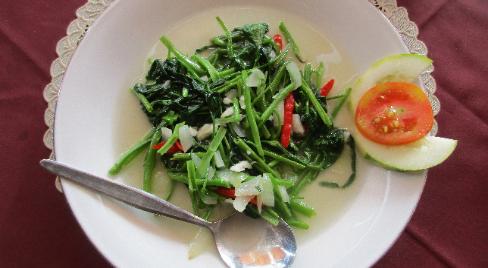
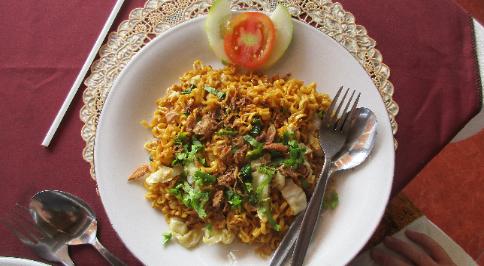
| Some of our best views were from a distance across this green expanse located next to the museum (see map below). Here you can take in all of Prambanan Temple at once. |
| I've added a few labels to make the map more readable. Your main reason for coming is the central Prambanan Temple complex, of course, but it's also worth seeing the museum (with the view above) and the three smaller temples just to the north. It's possible to walk between each of the temples. |
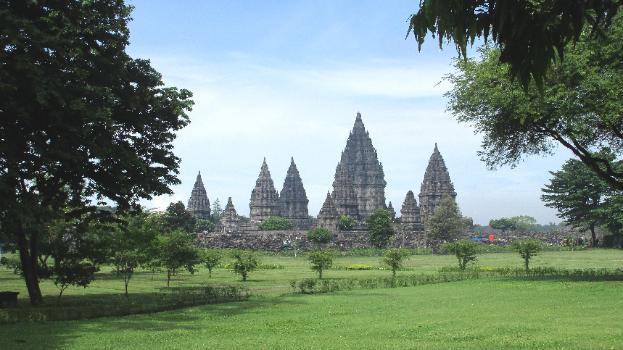
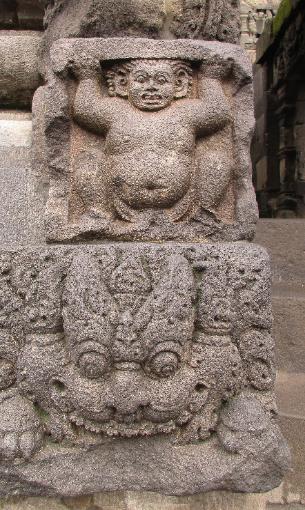
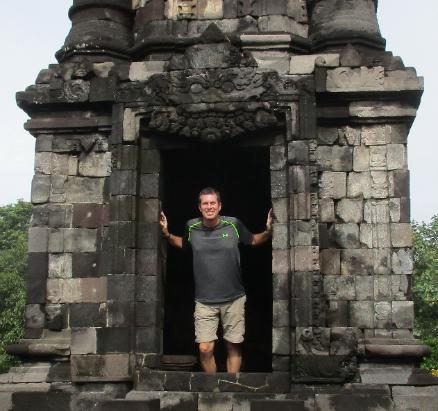
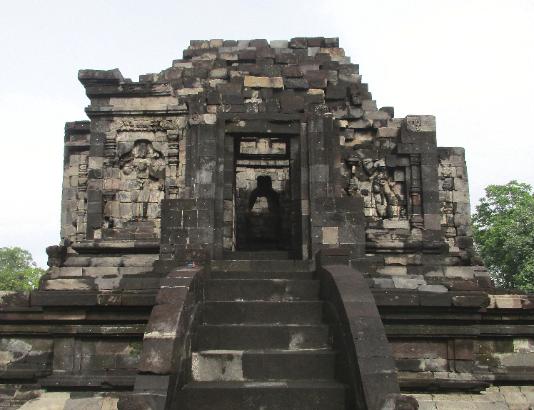
| Other Temples at Prambanan |
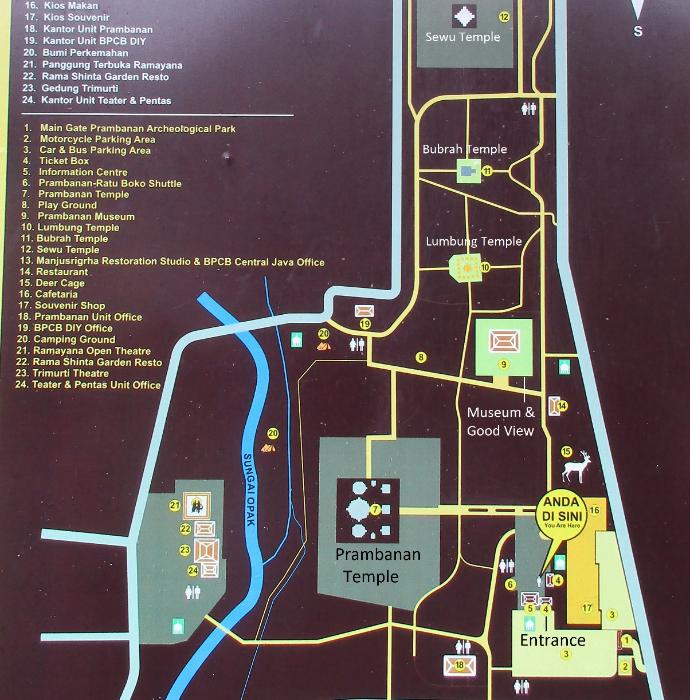
| This gives perspective on size -- it's one of two temples bracketing the main temple |
| Gargoyle-like creatures adorn the temples when you get up close |
| Elephants, monkeys, lions, horses, sheep, deer, and birds are all depicted in the bas reliefs |
| Hindu gods and Brahmin sages are other popular subjects |